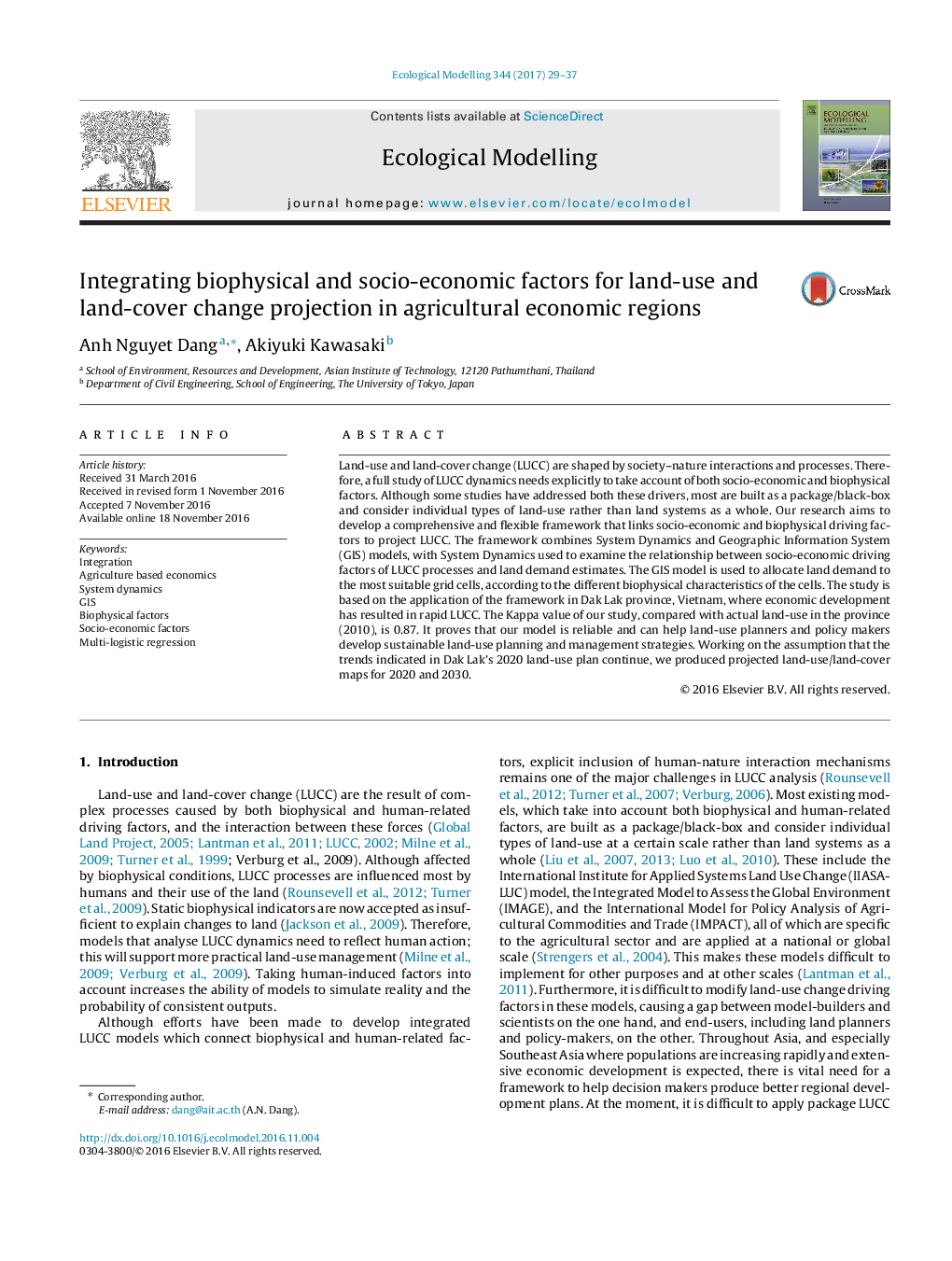| Article ID | Journal | Published Year | Pages | File Type |
|---|---|---|---|---|
| 5742277 | Ecological Modelling | 2017 | 9 Pages |
â¢Socio-economical and biophysical driving factors were incorporated to project land-use change.â¢The proposed model works with limited data covering dynamic and multi-scale land-use change process.â¢Easy-to-use, transparent approach for filling the gap between scientist and policy maker.
Land-use and land-cover change (LUCC) are shaped by society-nature interactions and processes. Therefore, a full study of LUCC dynamics needs explicitly to take account of both socio-economic and biophysical factors. Although some studies have addressed both these drivers, most are built as a package/black-box and consider individual types of land-use rather than land systems as a whole. Our research aims to develop a comprehensive and flexible framework that links socio-economic and biophysical driving factors to project LUCC. The framework combines System Dynamics and Geographic Information System (GIS) models, with System Dynamics used to examine the relationship between socio-economic driving factors of LUCC processes and land demand estimates. The GIS model is used to allocate land demand to the most suitable grid cells, according to the different biophysical characteristics of the cells. The study is based on the application of the framework in Dak Lak province, Vietnam, where economic development has resulted in rapid LUCC. The Kappa value of our study, compared with actual land-use in the province (2010), is 0.87. It proves that our model is reliable and can help land-use planners and policy makers develop sustainable land-use planning and management strategies. Working on the assumption that the trends indicated in Dak Lak's 2020 land-use plan continue, we produced projected land-use/land-cover maps for 2020 and 2030.
